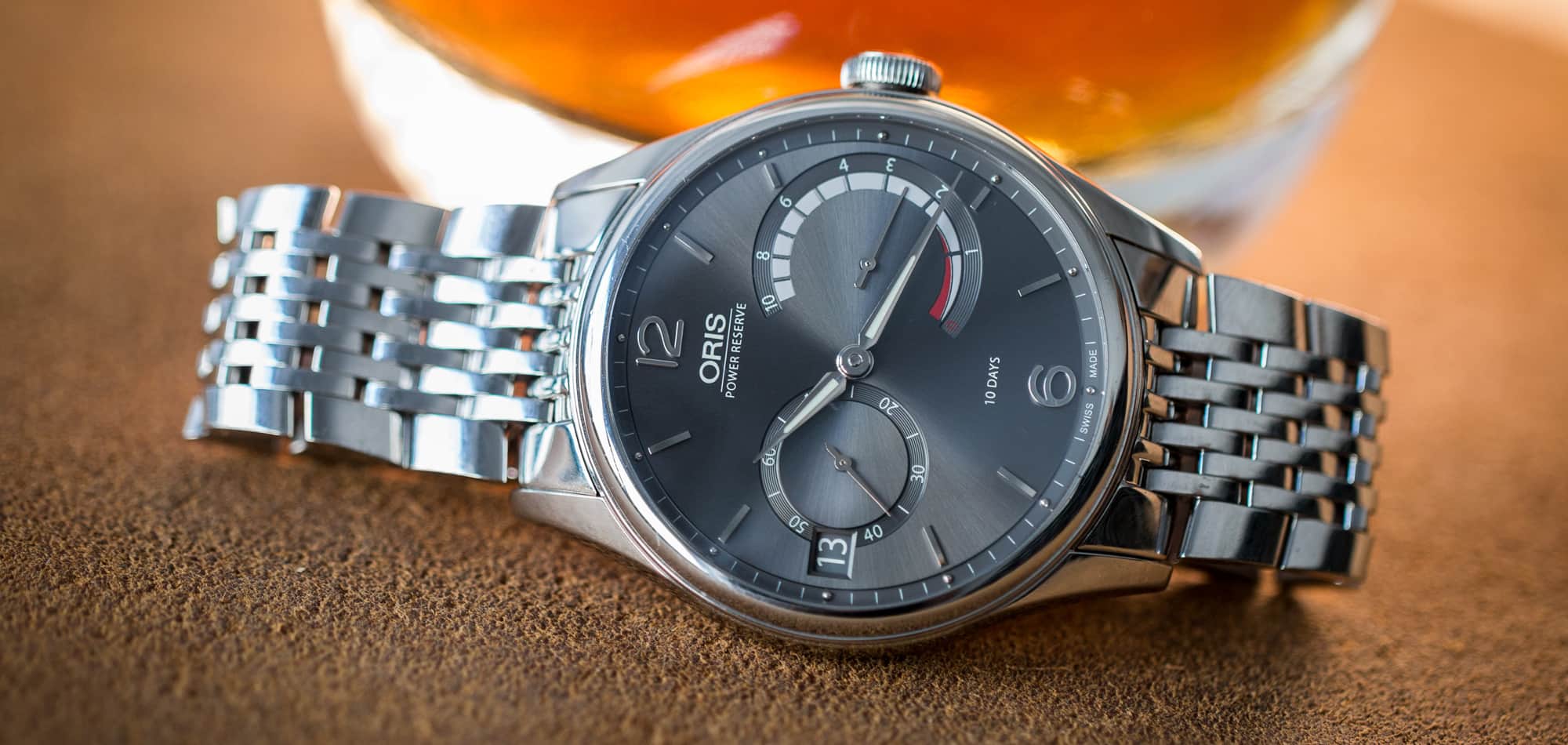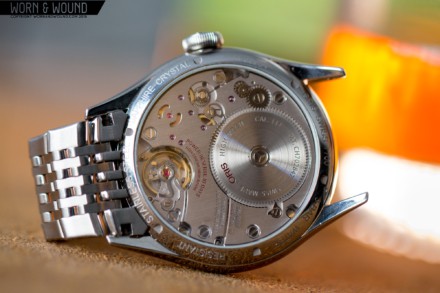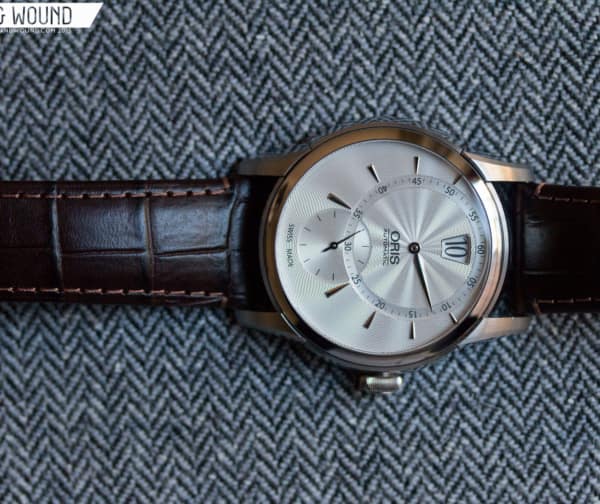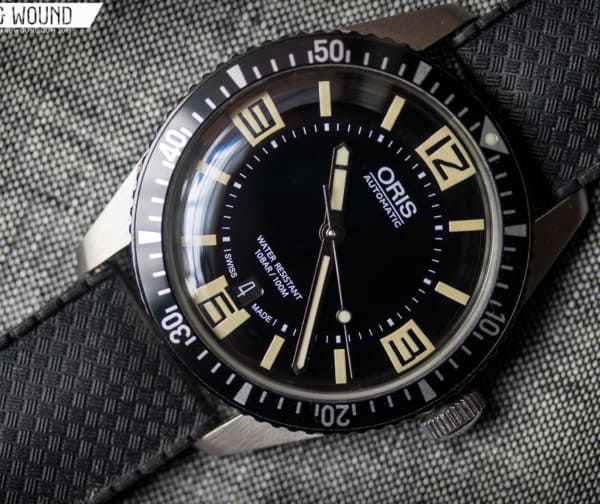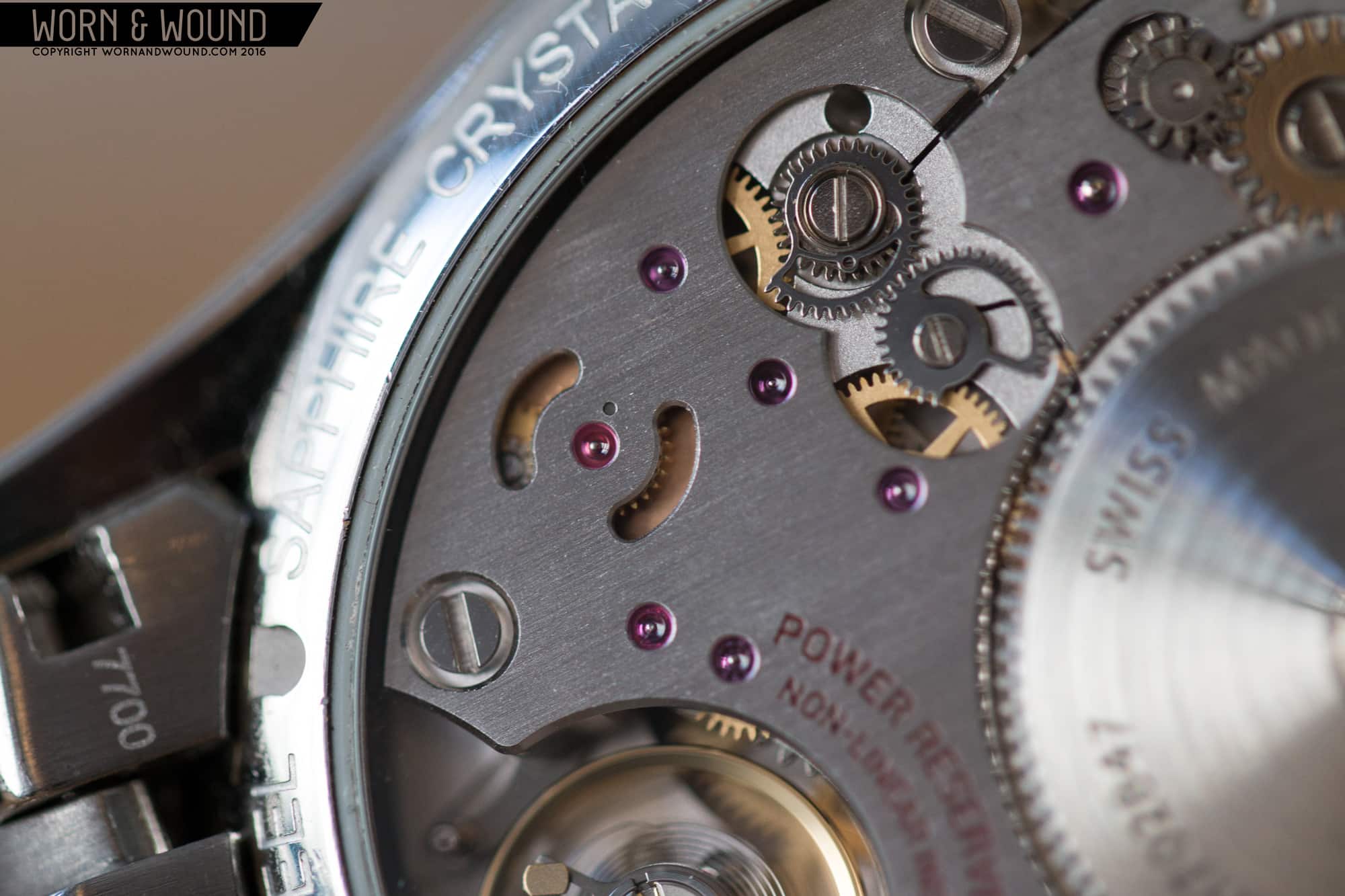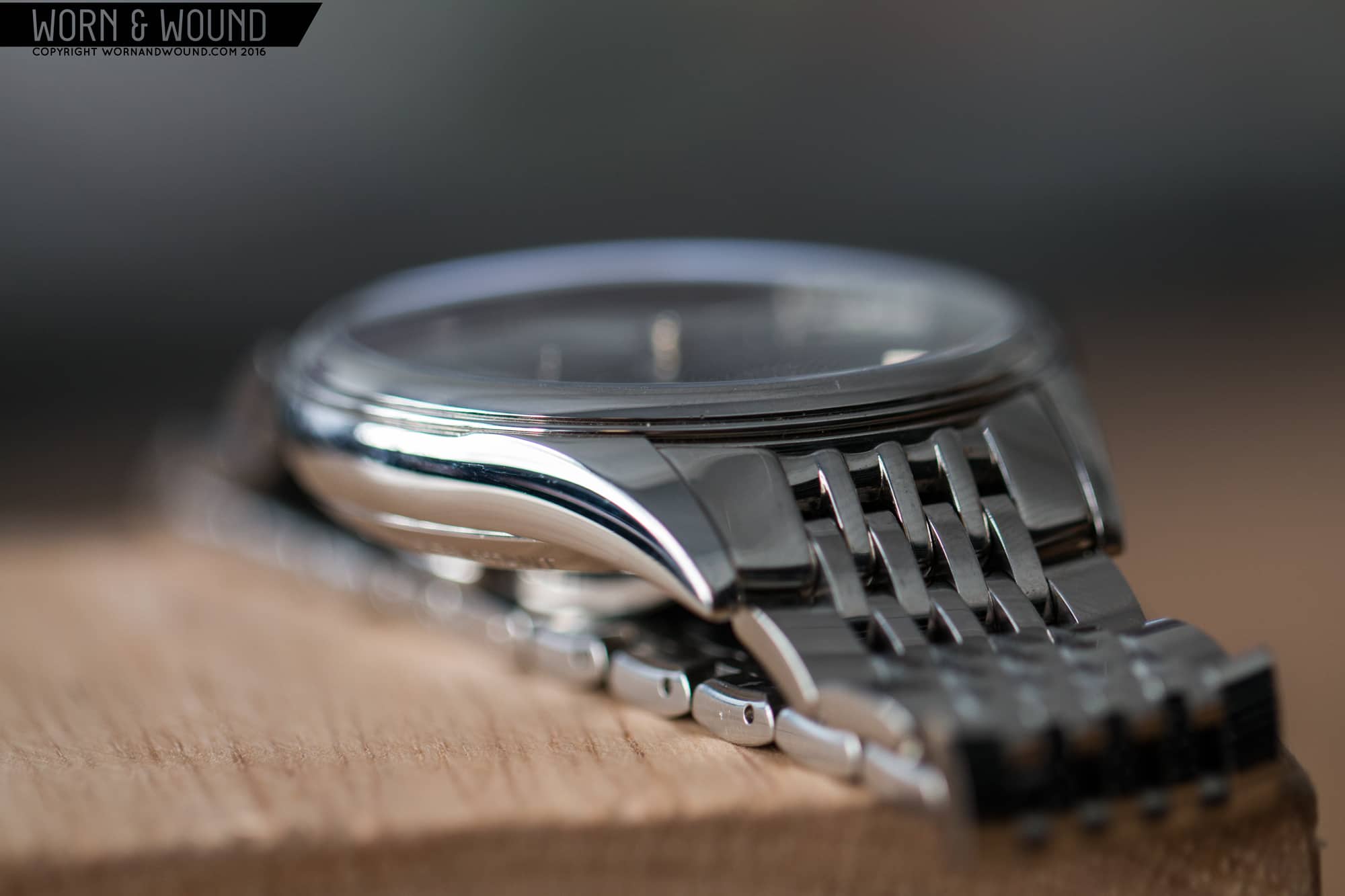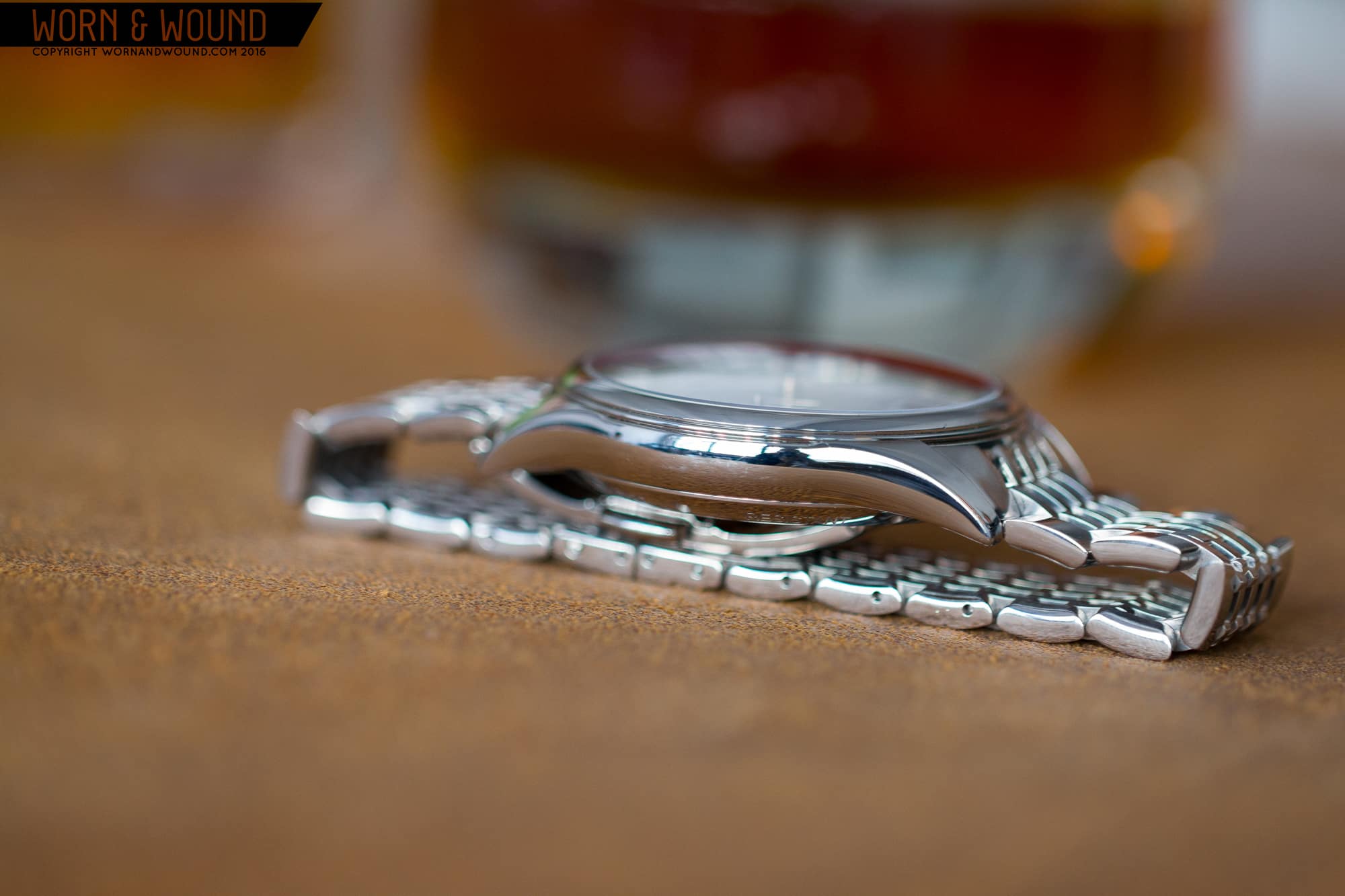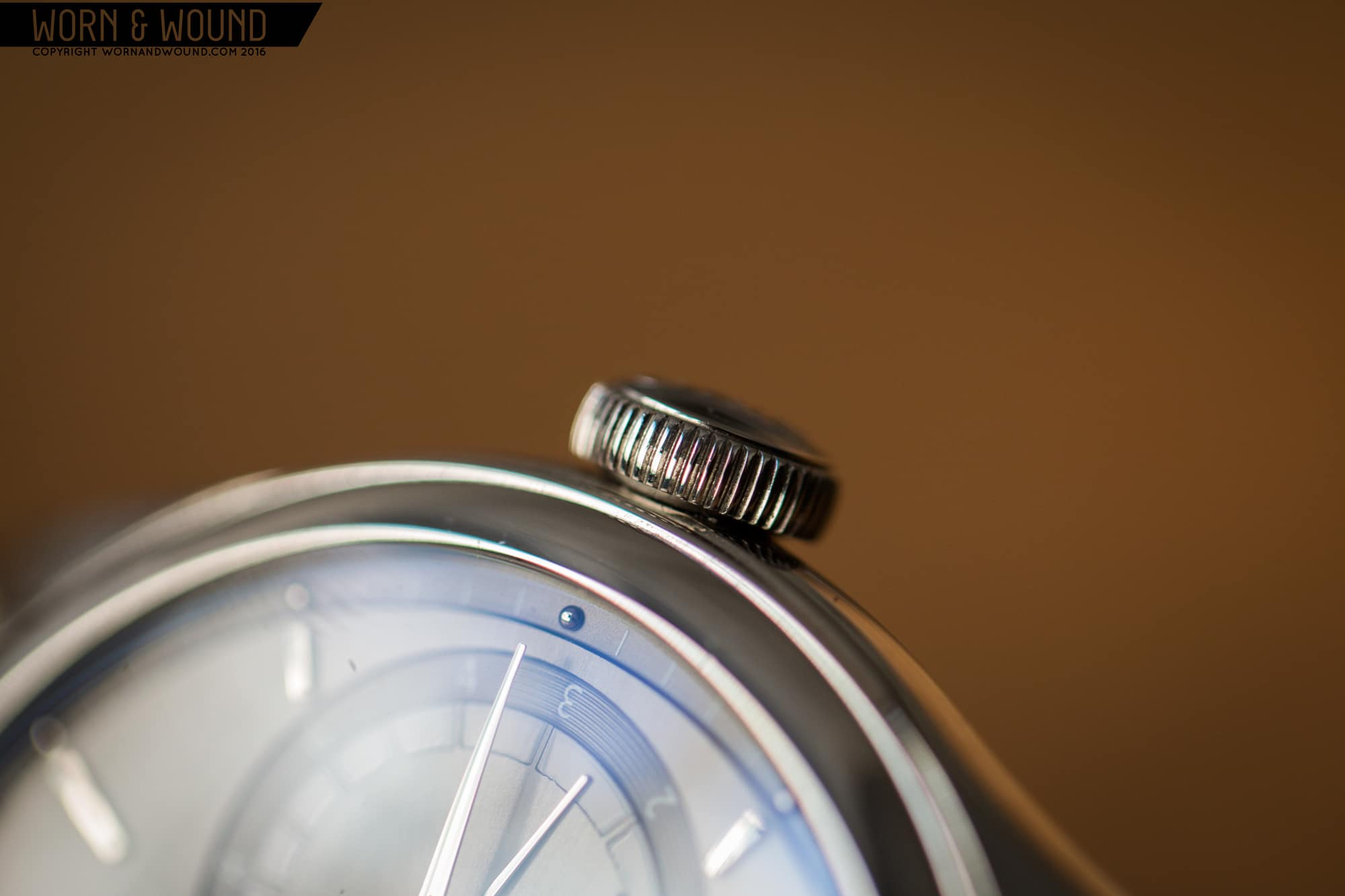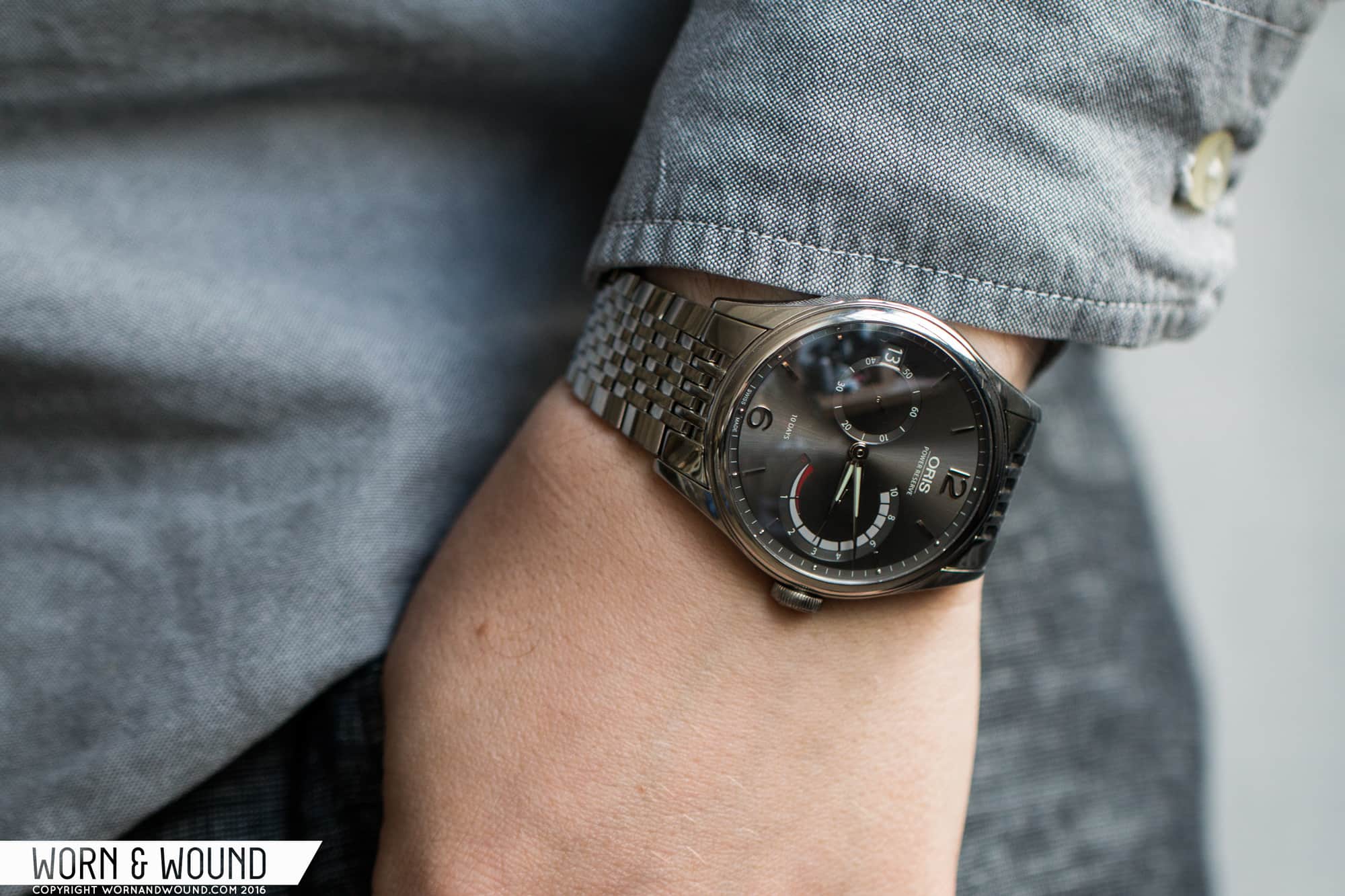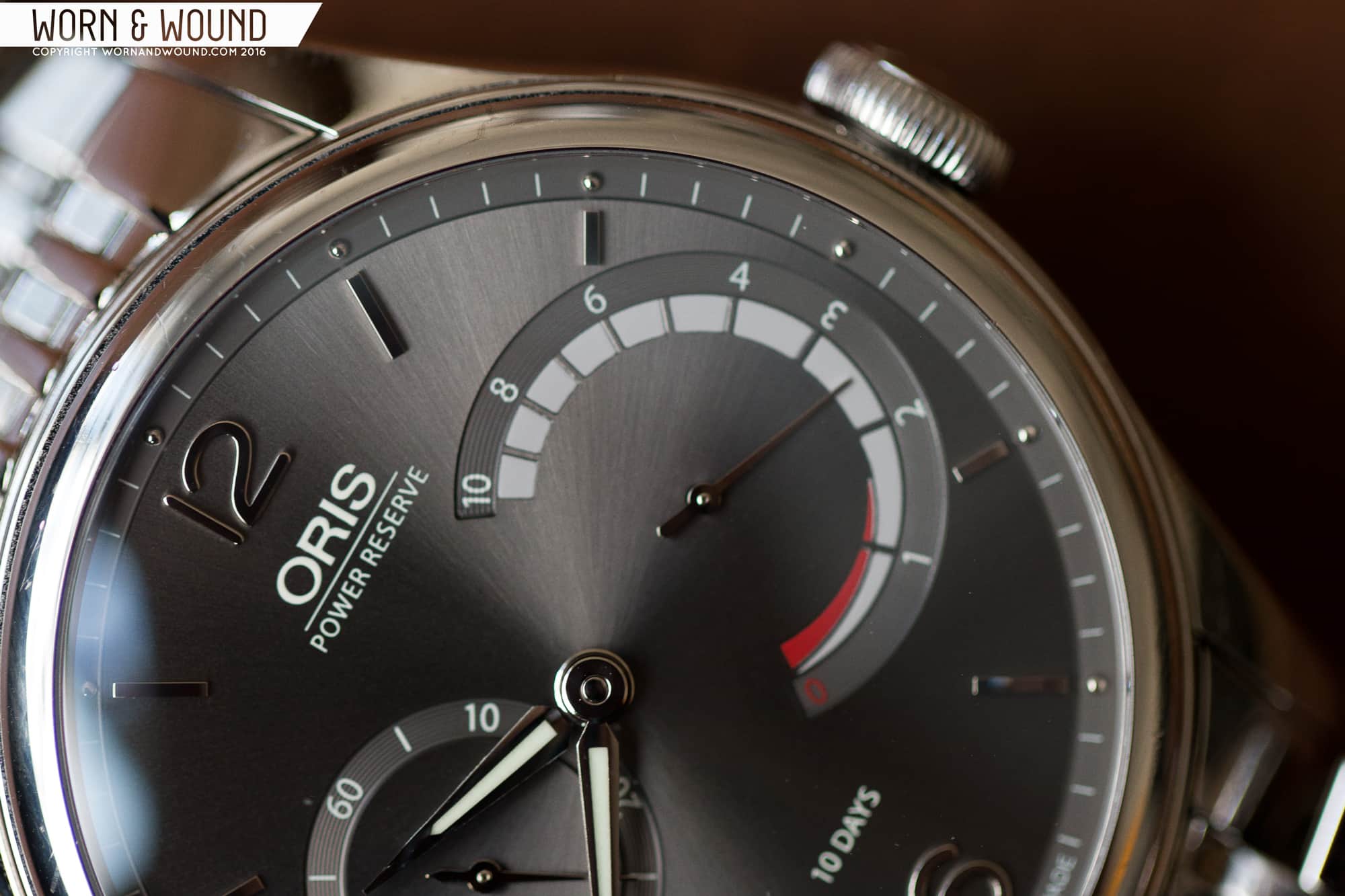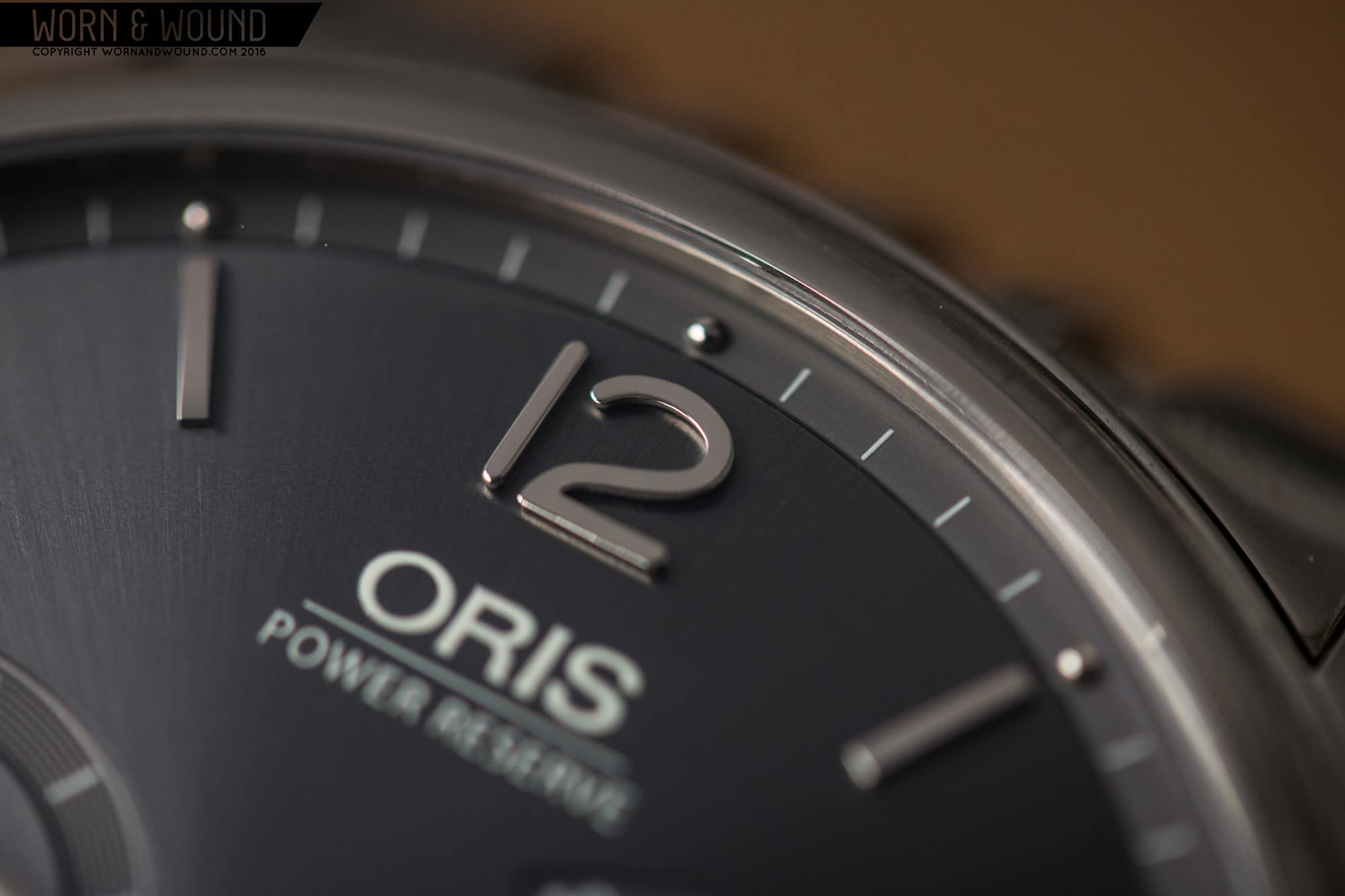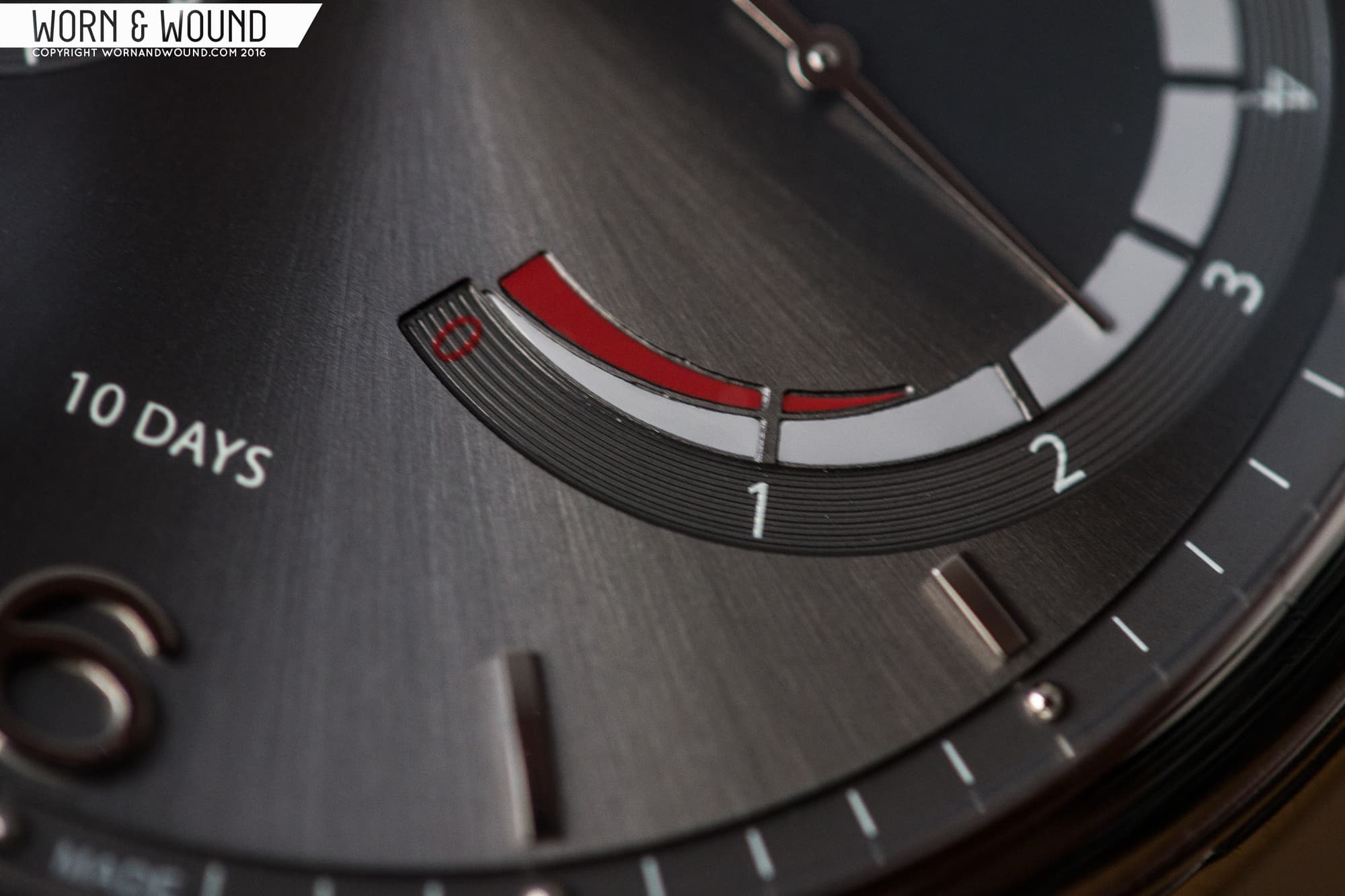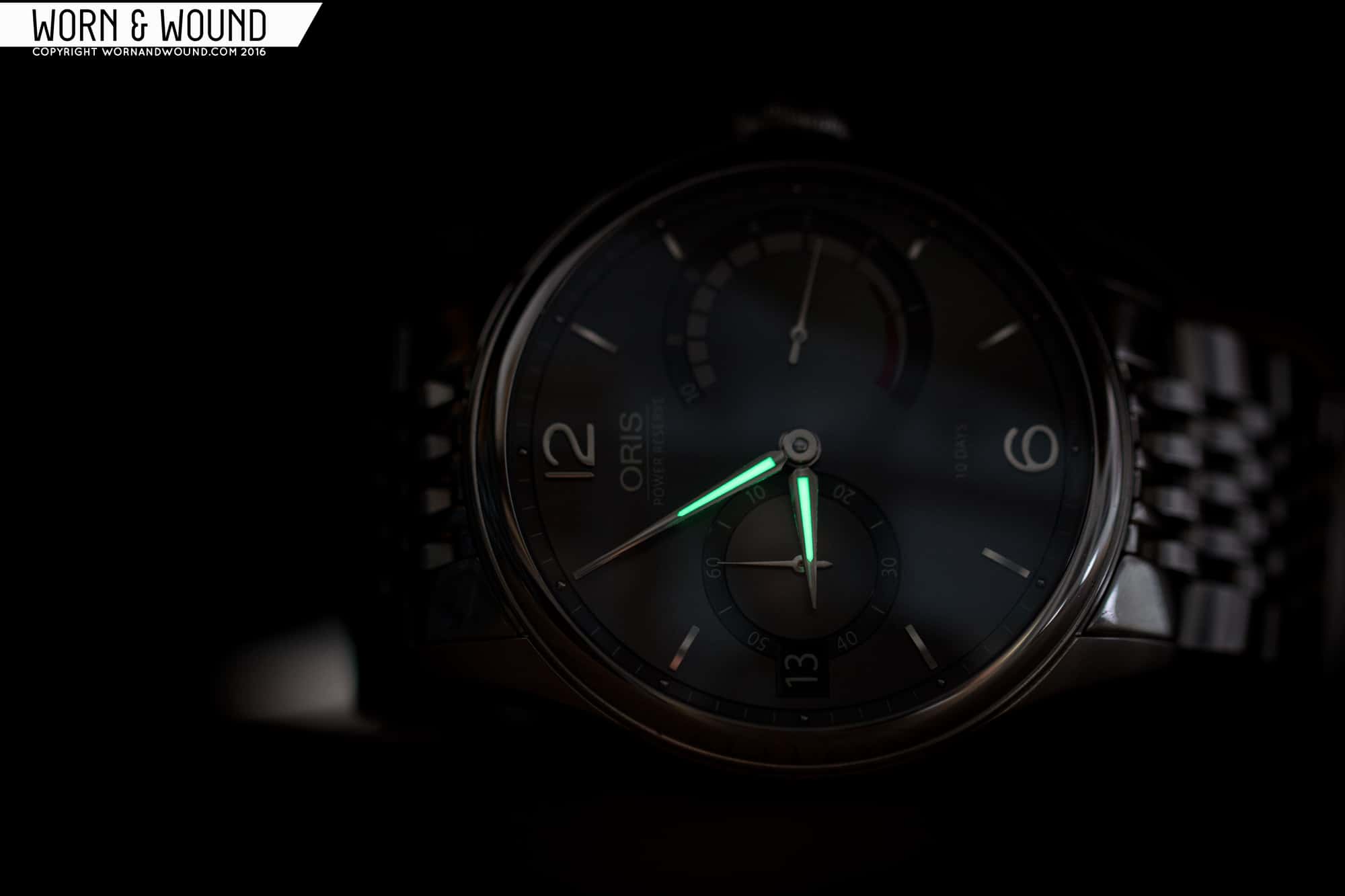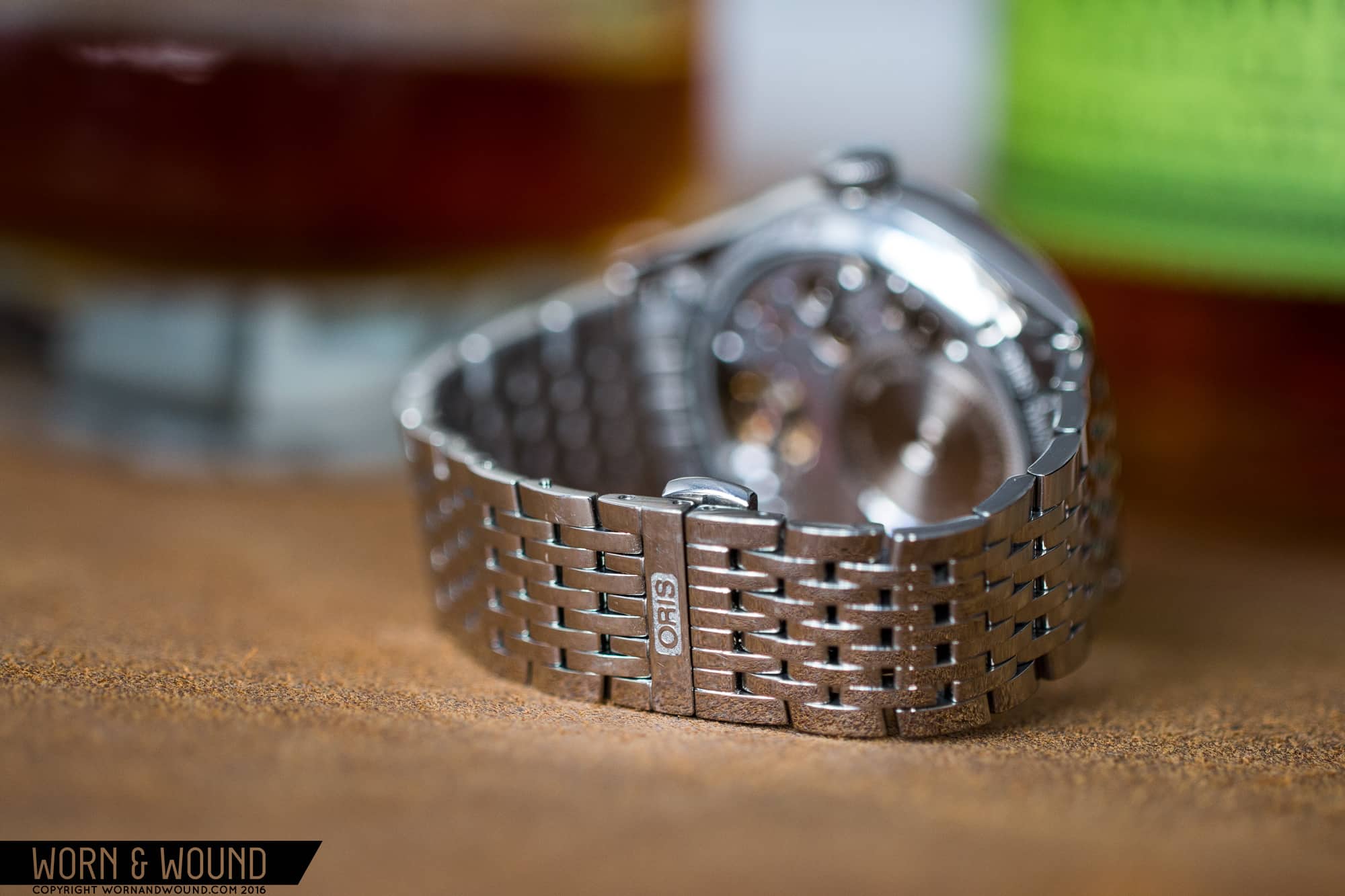In 2014, Oris turned heads with the release of the Artelier Calibre 110, a limited edition watch boasting the brand’s first in-house movement (also referred to as the caliber 110) since the firm stopped in-house production in the early ‘80s. From my perspective, it was one of 2014’s most interesting releases. We’re big fans of Oris here at worn&wound, so it was exciting to see the beloved independent take such a big step. And big it was because the caliber 110 is an undeniable powerhouse—a mechanical hand-cranker with a whopping 10-day, non-linear power reserve.
The caliber 111, which features the addition of a date complication, is the follow up to the 110, and the watch using this fantastic movement (and the one we’re reviewing today) is the Oris Artelier Calibre 111 Anthracite (anthracite denoting the dial color). The 111 is not limited.  As one might expect, an in-house movement means that this watch comes with added cost. The retail is $5,700 on a bracelet and $5,800 on a crocodile strap with deployant, so it’s quite a chunk of change and a bit of a novel price point for Oris to be in. But there’s also a lot packed into this watch that’s worth noting. Without further ado, let’s get to it.
As one might expect, an in-house movement means that this watch comes with added cost. The retail is $5,700 on a bracelet and $5,800 on a crocodile strap with deployant, so it’s quite a chunk of change and a bit of a novel price point for Oris to be in. But there’s also a lot packed into this watch that’s worth noting. Without further ado, let’s get to it.









 Featured Videos
Featured Videos




